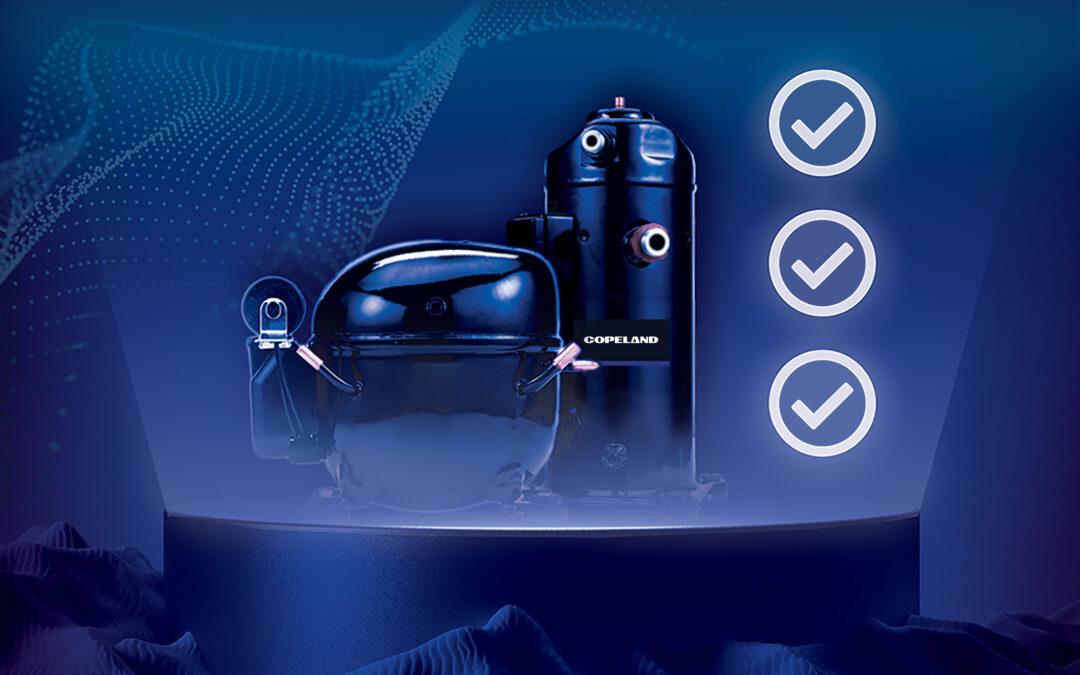*On June 1, 2023 Emerson’s Climate Technologies business became a new standalone company – Copeland. Though our name has changed, we are building on more than a century of HVACR innovation and industry leadership, and Copeland continues to offer the same products, industry stewardship, and learning opportunities you’ve grown to trust. Information found on this webpage posted before June 1, 2023 may contain our old name or branding, but you can be at ease knowing it was created with the knowledge and expertise of Copeland.

In a time when refrigerants are being closely evaluated for their environmental impacts, the natural refrigerant propane (or R-290) is making a comeback in commercial refrigeration. With a global warming potential (GWP) of 3 and an ozone depletion potential (ODP) of 0, R-290 poses virtually no threat to the environment. In fact, the Environmental Protection Agency (EPA) has listed R-290 as an acceptable refrigerant substitute under its Significant New Alternatives Policy (SNAP), and even exempted it from the venting prohibition in Section 608 of the Clean Air Act.
Why all the concern about refrigerants and the environment? The EPA estimates that an average supermarket using the hydrofluorocarbon (HFC) refrigerant R-404A leaks about 25 percent of its refrigerant charge annually, resulting in approximately 1,556 metric tons of CO2 equivalent emissions — or the collective annual energy used by 165 homes. When you consider the number of grocery stores and other refrigeration applications in service globally, the magnitude of this impact quickly becomes apparent.
It’s no surprise then that an international wave of regulatory actions is underway to phase down high-GWP HFC refrigerants, including: the E.U.’s F-gas regulations, the EPA’s SNAP process and the recent amendment to the Montreal Protocol. One by-product of this increased activity is a renewed interest in R-290.
R-290 was a true “green” refrigerant long before science had become aware of environmental problems such as ozone depletion and global warming. Its use dates back to the early 1900s when refrigeration systems relied solely on naturally occurring compounds (hydrocarbons) in the compression cycle. From the beginning, it was characterized by its contrast of pros and cons — excellent thermodynamic properties on one hand, potential flammability on the other.
With the invention of synthetic, non-flammable chlorofluorocarbon (CFC) refrigerants in the 1930s, the use of propane in refrigeration applications was all but eliminated. But, when CFCs were found to deteriorate the Earth’s ozone layer in the 1980s, the refrigeration industry once again started taking a closer look at natural refrigerants. And when synthetic HFCs were recently identified as sources of global warming, the stage was set for wider R-290 adoption.
European food retailers were among the first to deploy R-290 based systems in the early part of the 2000s. Ten year later, a handful of early U.S. adopters started using R-290 in commercial refrigeration. Today, the commercial refrigeration industry is experiencing an increasing proliferation of R-290 systems, and some OEMs are even making R-290 the basis for their entire product portfolios.
Due to its flammability, R-290 has a longstanding low charge limit of 150g, and is primarily deployed in smaller, self-contained applications. Codes and standards groups such as the International Electrotechnical Commission (IEC) and Underwriters Laboratories (UL) are currently evaluating charge limit increases. Updates to these standards are expected within the next few years, which may expand the potential of R-290 even further.
Read the full Accelerate America article on R-290 [pg.14].

Electrical component considerations for A2L system safety
Electrical component considerations for A2L system safety As a new refrigerant category in the...

A2L refrigerant regulation updates: what you need to know today
Preparing for the approval and safe use of A2Ls in commercial refrigeration applications The move...

Address Efficiency Mandates with Compression Technologies
Strategies for complying with DOE and ENERGY STAR® in self-contained and remote condensing units...
